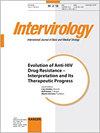Differences in Susceptibility of Human and Mouse Macrophage Cell Lines to Respiratory Syncytial Virus Infection
IF 3.2
4区 医学
Q3 VIROLOGY
引用次数: 3
Abstract
Objectives: Differences have been observed in the susceptibility of macrophage cell lines to respiratory syncytial virus (RSV) infection. In this study, we evaluated whether the type of macrophage cell line and RSV strain used have an influence on the infectivity and production of progeny virus. Methods: Both human and murine macrophage-like cell lines were infected with different RSV strains, both lab strains as well as clinical isolates. The infection was evaluated after 24 and 72 h by immunofluorescence staining and microscopic analysis, and the production of new virus particles was determined by plaque assay. Results: Susceptibility of macrophages to RSV was influenced by the RSV strain used but was mostly dependent on the macrophage cell line. Numbers of infected cells and virus production were generally very low or absent in murine cell lines. In human cell lines, clear infection was observed associated with production of new virus particles. Conclusion: Differences in susceptibility of macrophage cell lines to RSV infection are primarily related to the species of origin of the cell line but are also influenced by the RSV strain.人和小鼠巨噬细胞系对呼吸道合胞病毒感染易感性的差异
目的:观察巨噬细胞系对呼吸道合胞病毒(RSV)感染易感性的差异。在这项研究中,我们评估了巨噬细胞系和RSV毒株的类型是否对后代病毒的传染性和产生有影响。方法:用不同的RSV实验室菌株和临床分离株感染人和小鼠巨噬细胞样细胞系。在24和72 h后通过免疫荧光染色和显微镜分析评估感染情况,并通过空斑试验检测新病毒颗粒的产生。结果:巨噬细胞对RSV的敏感性受RSV菌株的影响,但主要依赖于巨噬细胞系。在小鼠细胞系中,感染细胞的数量和病毒的产生通常很低或不存在。在人类细胞系中,观察到明显的感染与新病毒颗粒的产生有关。结论:巨噬细胞对RSV感染的易感性差异主要与细胞来源种类有关,但也受RSV毒株的影响。
本文章由计算机程序翻译,如有差异,请以英文原文为准。
求助全文
约1分钟内获得全文
求助全文
来源期刊

Intervirology
医学-病毒学
CiteScore
5.40
自引率
0.00%
发文量
13
审稿时长
6-12 weeks
期刊介绍:
''Intervirology'' covers progress in both basic and clinical virus research, and aims to provide a forum for the various disciplines within virology. Issues publishing original papers alternate with thematic issues, focusing on clearly defined topics. This thematic concentration serves to make timely reviews, research reports and controversy easily accessible to both specialists in the field and those who want to keep track of the latest developments outside their own area of interest. In addition to original papers, regular issues publish short communications and letters to the editor to provide readers with a forum for the exchange of ideas and comments. The scope encompasses work on the molecular biology of human and animal viruses, including genome organization and regulation, and the structure and function of viral proteins. The pathogenesis, immunology, diagnosis, epidemiology, prophylaxis and therapy of viral diseases are considered.
 求助内容:
求助内容: 应助结果提醒方式:
应助结果提醒方式:


